Making the Most of Reclaimed Vehicle Batteries: Power Storage Solutions to Promote Renewable Energy
17 April 2023
INDEX
Pioneering the Future of Energy Storage Systems with Toyota Motor Corporation
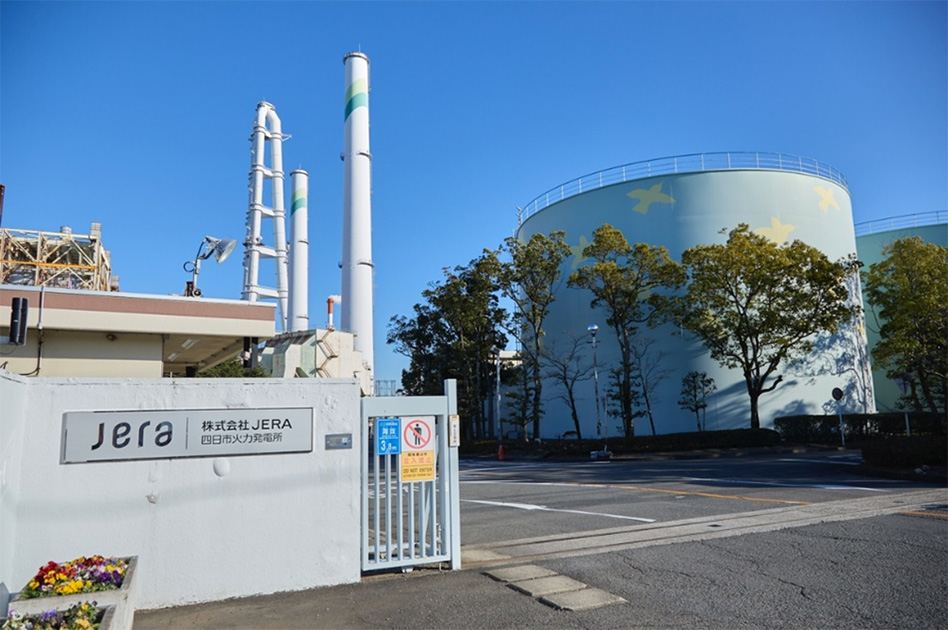
In February 2023, we visited Yokkaichi Thermal Power Station in the city of Yokkaichi, Mie Prefecture. The plant is located in a corner of the Yokkaichi Industrial Complex overlooking Ise Bay, where for nearly 60 years, it has continued to meet the increasing demand for electric power during a time of high economic growth in the Chubu region.
We were greeted at the large-capacity Sweep Energy Storage System demonstration facility by Ryoichi Ozaki and Tomohiro Moriyama, who are leading demonstration tests with Toyota Motor Corporation.
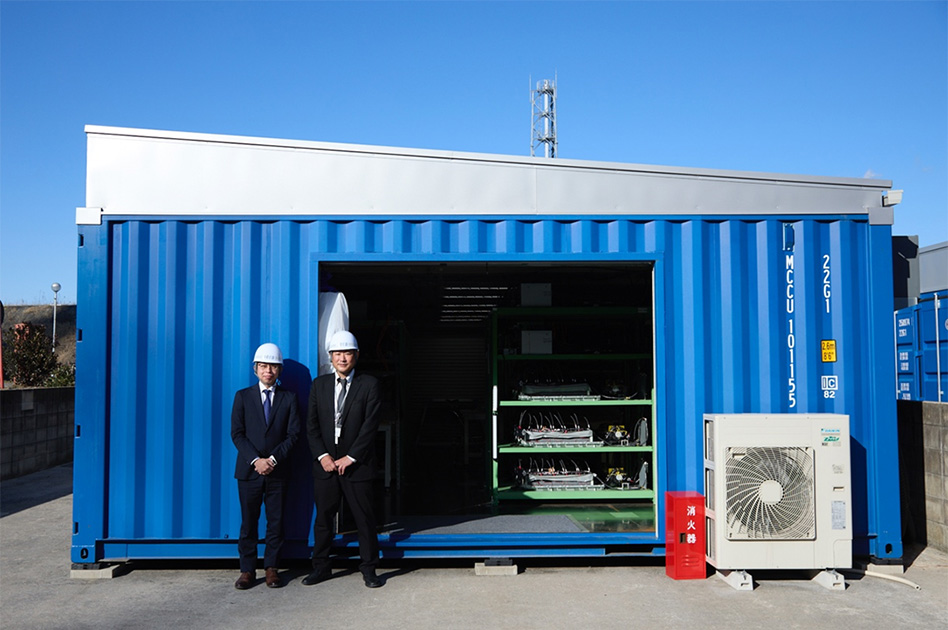
Project leader Ryoichi Ozaki (left) and chief electrical engineer Tomohiro Moriyama (right) lead demonstration tests of the large-capacity Sweep Energy Storage System.
Moriyama: “As we see more renewable energy sources introduced to reduce CO2 emissions and achieve carbon neutrality, storage batteries are expected to experience a rise in demand as they can help stabilize energy supply. Furthermore, given the limited reserves of resources such as cobalt and lithium, which are required for manufacturing batteries, it is essential to promote environmentally friendly practices, such as using reclaimed electric car batteries as storage batteries. JERA and Toyota have been collaboratively investigating storage battery solutions since 2018, and they are presently working on a large-capacity Sweep Energy Storage System that reuses batteries from electric vehicles by integrating them with the power grid. Demonstration tests commenced on October 27, 2022, using an energy storage system installed on the power plant premises. Further tests began on January 23, 2023, when the system was connected to the power grid. Due to the system's unprecedented nature, we faced difficulties in verifying the necessary functional requirements to connect to the grid and had to adjust accordingly. Today, we have 120 reclaimed batteries connected for charging and discharging operations."
The project was initially launched in 2018 when JERA approached Toyota with a new idea they had been working on.
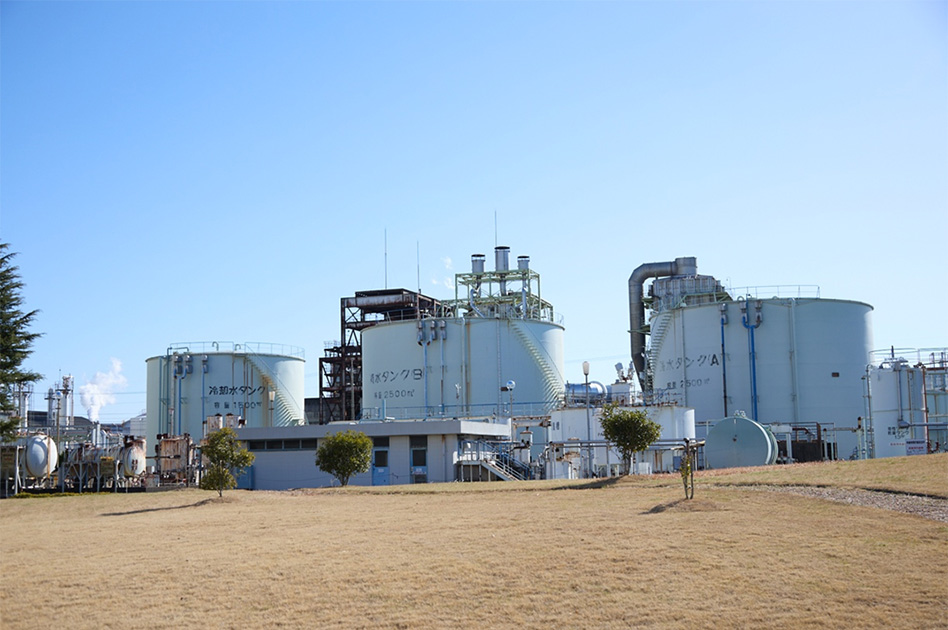
Yokkaichi Thermal Power Station helped support Japan's period of rapid economic growth.
Ozaki: “With accelerated efforts to decarbonize globally, I thought about whether we could adopt a circular economy perspective and develop fresh initiatives that promote the spread and expansion of renewable energy. That was the seed of this idea and marked the point where I turned my attention to battery storage. Toyota knows how to reclaim batteries from electric cars, and JERA has expertise in grid connectivity and thermal power supply and demand. Together, we aim to establish a reliable infrastructure for supplying renewable energy that can respond effectively to changing climate conditions. That’s how our joint project with Toyota started.”
The development of the large-capacity Sweep Energy Storage System, which utilizes reclaimed electric vehicle batteries, began with the goal of leveraging the strengths of both companies to promote resource recycling and ensure a stable supply of clean energy.
Pursuing a Breakthrough in World-First Technology
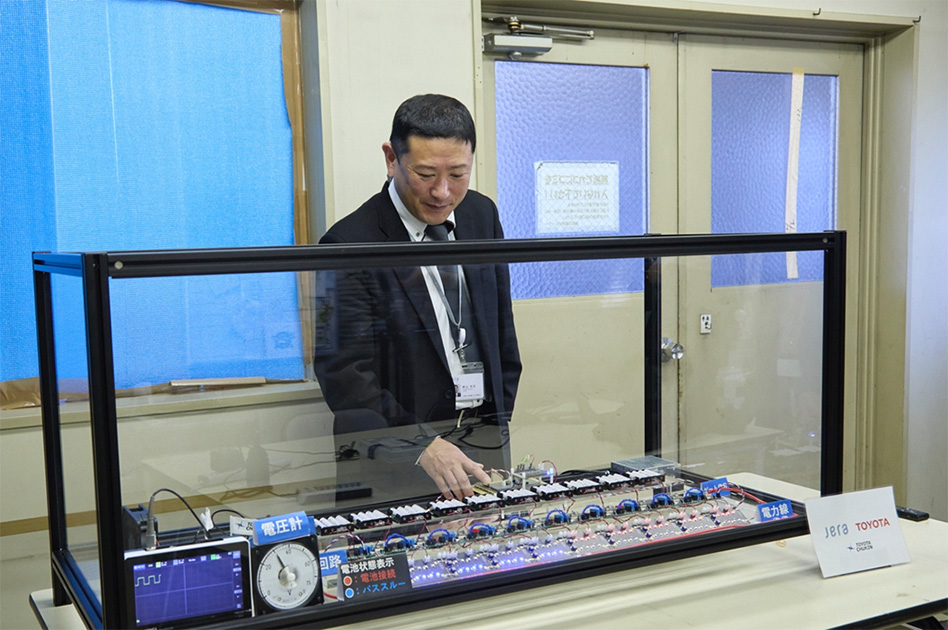
Demo unit designed to explain the operating principles of the Sweep Energy Storage System
Moriyama: “The sweep function allows for precise control of the charging and discharging of a series of batteries by rapidly switching them on and off in microseconds (equivalent to one-millionth of a second). With this technology, it will be possible to fully utilize the capacity of a mixed array of batteries, regardless of their level of degradation.”
Moriyama explains the operating principles of the Sweep Energy Storage System using a demo unit in which dry-cell batteries play the role of reclaimed car batteries.
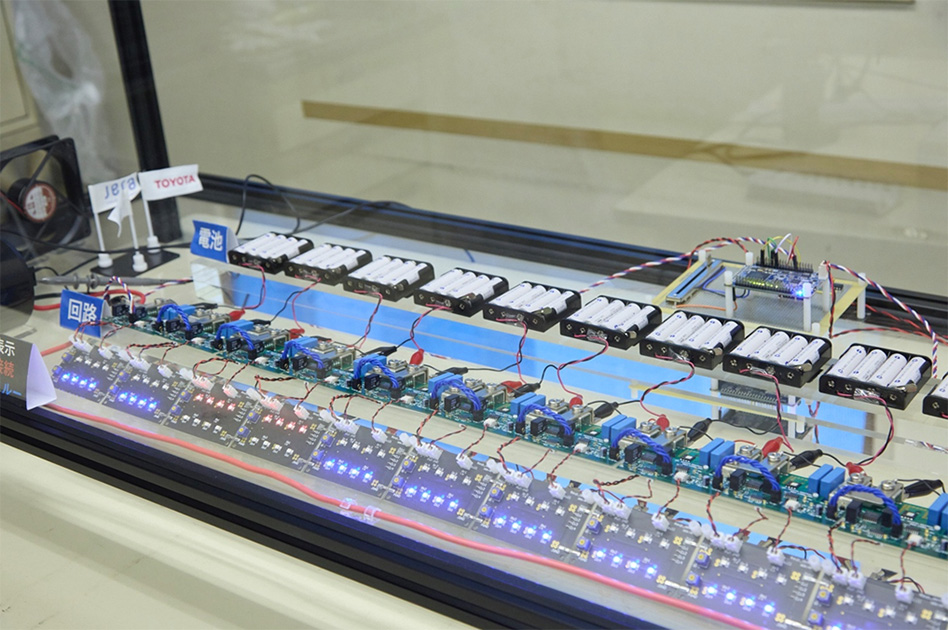
The demo unit comprises ten battery cartridges and features a sweep function that can generate AC and DC power without a power converter. This same mechanism was applied in constructing the actual Sweep Energy Storage System.
Moriyama: “The red light indicates that the power is on, and the blue light indicates that the power is off. The system monitors the status of the batteries and switches circuits accordingly to ensure a stable supply of electricity. A central control unit monitors the battery status, and when it detects a battery with low capacity, it transfers its load to a different battery. In a typical energy storage system, the failure of a single battery can cause the entire system to stop functioning. However, the sweep function enables individual batteries to be disconnected and replaced without interrupting the system's operation. The ability to convert directly from AC to DC power is one of the strengths of the sweep function.”

Ozaki adds his perspective having coordinated with Toyota throughout the project.
Ozaki: “JERA is responsible for connecting Toyota's Sweep Energy Storage System to the power grid by applying the mechanisms demonstrated in this prototype. We are also tasked with increasing the system’s capacity, so we are formulating appropriate operational policies and evaluating the value of the system’s impact. We have worked closely with Toyota for the past five years to move this project forward as a joint project. Due to the unprecedented nature of the technology, we initially had to hold frequent meetings to ensure that both companies were on the same page. As the demonstration tests approached, we held daily in-person meetings to share our progress on the technical development and any challenges we faced. Building on a thorough understanding of the operating principles of this sweep technology, we've been working on new ways to move power between batteries without a power conditioning system (PCS). We've conducted tests using nickel-hydrogen and lithium-ion batteries in smaller demonstrations, and we're trying to find a way to make it work for all kinds of batteries. In the 2022 fiscal year, we are planning demonstration tests connecting the large-capacity Sweep Energy Storage System to distribution lines to ensure compliance with requirements of the power grid and delivery to various power markets.”
JERA and Toyota are currently working towards achieving a circular economy by collecting materials such as lithium and cobalt from reused batteries and developing a non-burning recycling process to achieve high purity, high recovery rates, and low CO2 emissions.
Powering the Future with Clean, Green Energy
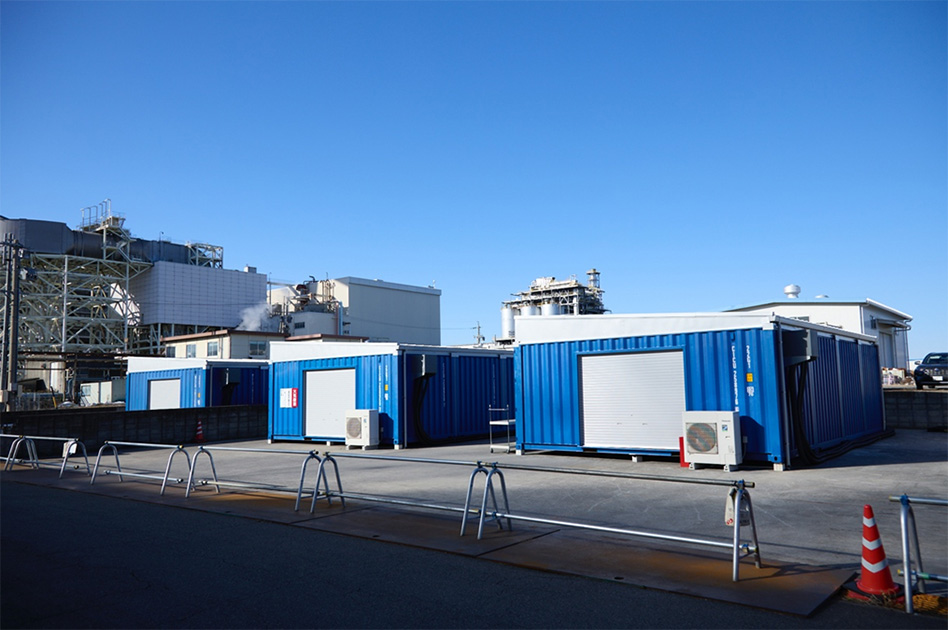
These three buildings house the power plant’s battery storage facilities (as of February 16, 2023). This is where the large-capacity Sweep Energy Storage System demonstration tests are taking place.
Ozaki: “Here at the large-capacity Sweep Energy Storage System, demonstration testing has been ongoing since January 23, 2023, as we charge and discharge storage batteries connected to the grid. Each of the three facilities consists of four interconnected 20-foot containers. In total, they hold reclaimed batteries from about 120 vehicles and can store enough energy to power around 150 households for one day.”
Upon entering the energy storage facility, we are struck by the sight of battery racks containing reclaimed batteries from hybrid electric, plug-in hybrid electric, battery electric, and other vehicles (HEVs, PHEVs, BEVs).
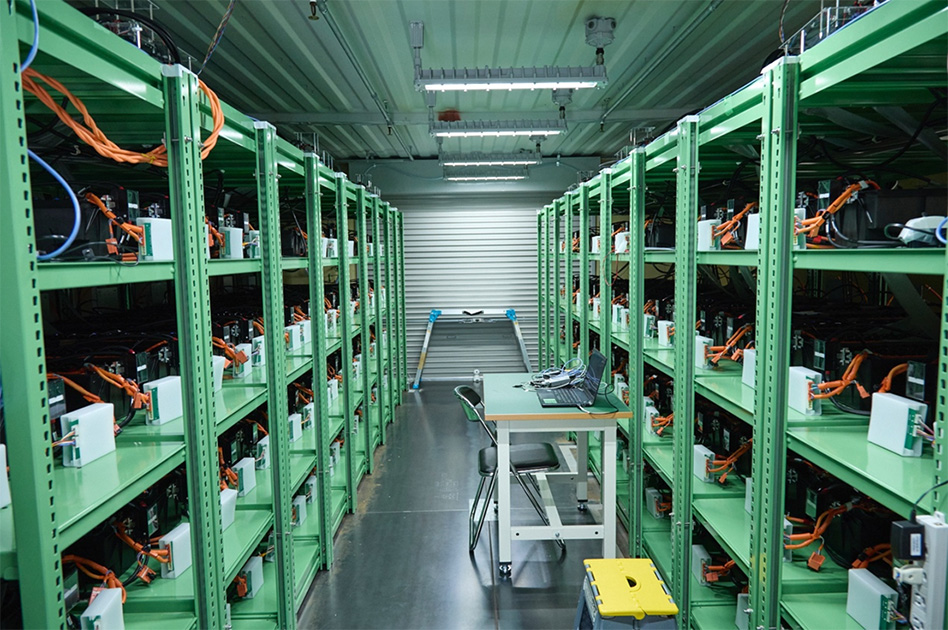
The facility is lined with reclaimed batteries from electric vehicles that were supplied by Toyota.
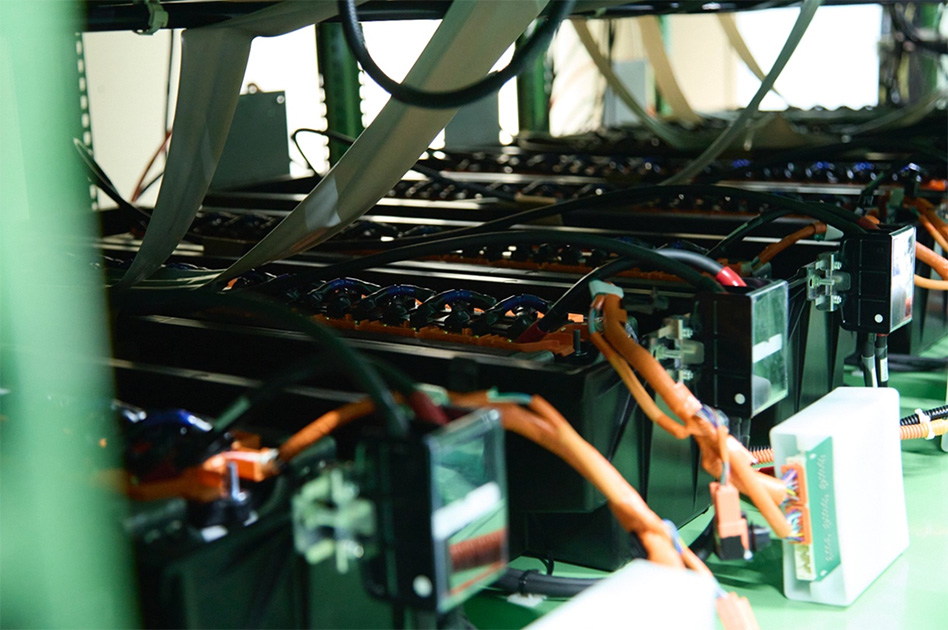
During demonstration tests, each battery cartridge is treated and managed as one unit.
Moriyama: “Until now, systems using reclaimed car batteries have suffered because the performance of the entire system was determined by the performance of the most degraded battery. When a battery ran out of power, the entire system would go down, even if other batteries still had excess energy available. The demo unit has highlighted the advantages of sweep technology, which lies in its ability to function with batteries of various qualities. This allows for stable charging and discharging of reclaimed batteries, regardless of their performance and capacity. The sweep technology also allows AC to DC conversion, eliminating the need for a PCS and improving the system's overall energy efficiency."
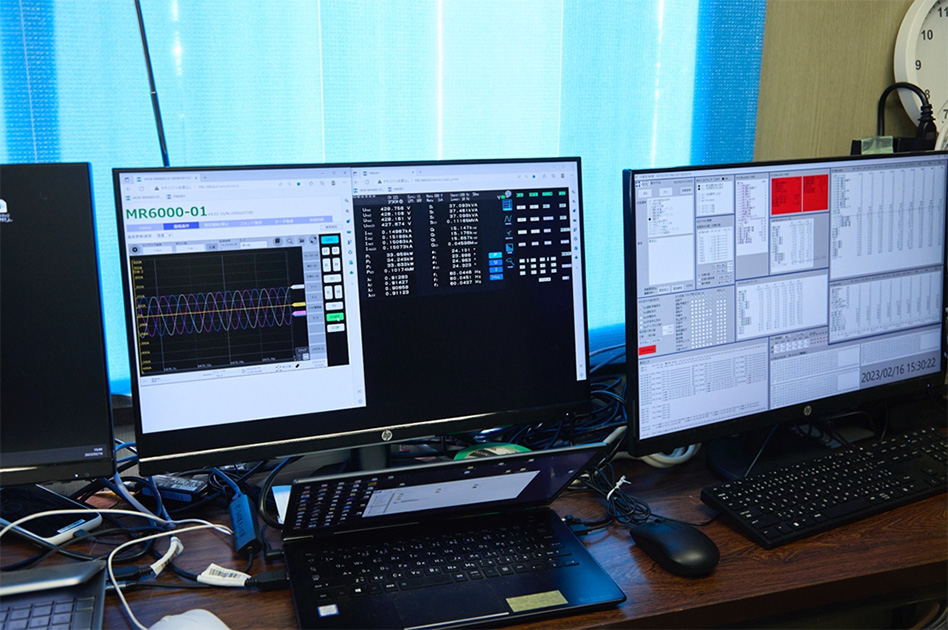
Data acquired during demonstration tests is sent to the general control unit of the large-capacity Sweep Energy Storage System. JERA is responsible for assessing the compatibility of the power system based on this aggregated data, which is then used to guide subsequent demonstration tests.
The facility currently has a power output capacity of 485 kW and an energy storage capacity of 1260 kWh. JERA has plans to connect the system to the power grid for distribution to households and factories, and Ozaki and Moriyama have an eye to the future, aiming to introduce a battery storage system capable of supplying upwards of 100,000 kWh by the mid-2020s.
Ozaki: “I don't see this as a project that will end at 100,000 kWh. The challenge lies in building a supply chain that connects new batteries as a kind of “artery,” while utilizing reclaimed batteries as the “veins” of an energy storage system, which we hope to achieve by integrating innovative recycling processes currently under development. We aim to approach these ideas from the perspective of the circular economy, showcasing the efforts JERA is making in this area.”
Moriyama: “I think it will be important to develop the system on a larger scale by linking it with renewable energy sources such as solar, wind, and biomass, adding environmental value to both electricity charging and discharging. We are making steady strides in our technology development efforts as we prepare for the construction of large-scale energy storage facilities.”
As part of its JERA Zero CO2 Emissions 2050 initiative, JERA remains committed to achieving virtually zero CO2 emissions from its domestic and overseas operations. We will continue to collaborate with frontrunners in the industry and focus on developing services that contribute to technological developments in areas such as energy storage system construction and optimal energy usage in our efforts to achieve carbon neutrality and a circular economy through resource recycling.
RELATED STORIES
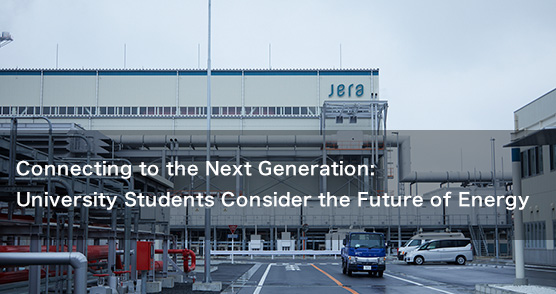
Connecting to the Next Generation: University Students Consider the Future of Energy
It's 10:00 a.m. on Friday, February 10, 2023. The air is humid in the Kanto and Chubu regions due to a southern …
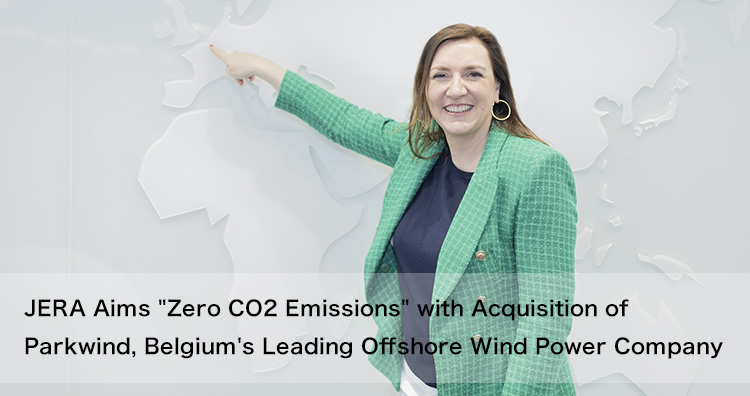
JERA Aims “Zero CO2 Emissions” with Acquisition of Parkwind, Belgium's Leading Offshore Wind Power Company
On March 22, 2023, JERA reached an agreement with Virya Energy, shareholder of Parkwind, a major Belgian offshore wind …
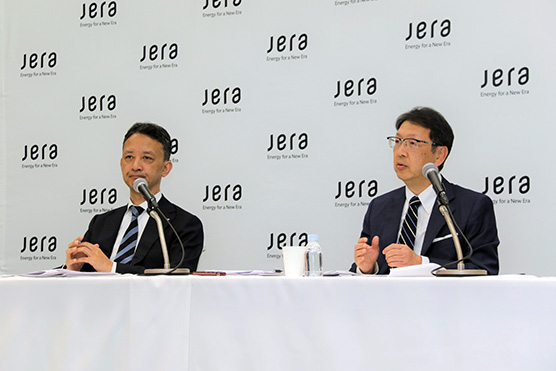
What are JERA's initiatives to promote renewable energy projects and ensure stable supply in the future?
On May 31, 2023, Yukio Kani, Chairman of the Board, Global CEO, and Hisahide Okuda, President, Director, CEO and COO …

